 | |||
 | |||

|
Creedence Clearwater Revival: Willy and the Poor Boys (1969) and Cosmo's Factory (1970) album cover locations. Creedence Clearwater Revival were together for 5 years from 1968 to 1972. During that time they produced 6 straight gold albums all laden with number one records written by John Fogerty. During 1969, while the Beatles were still thriving, Creedence outsold the Beatles with 5 hit singles. Their New Orleans-flavored, Cajun-tinged, voo-doo themed "swamp rock" sound, played behind John Fogerty's unique rockabilly voice made them worldwide American icons. Their appeal was practically universal and took in all age groups. Here's the album cover of Creedence's third album, Willy and the Poor Boys. I got the location from Wikipedia. 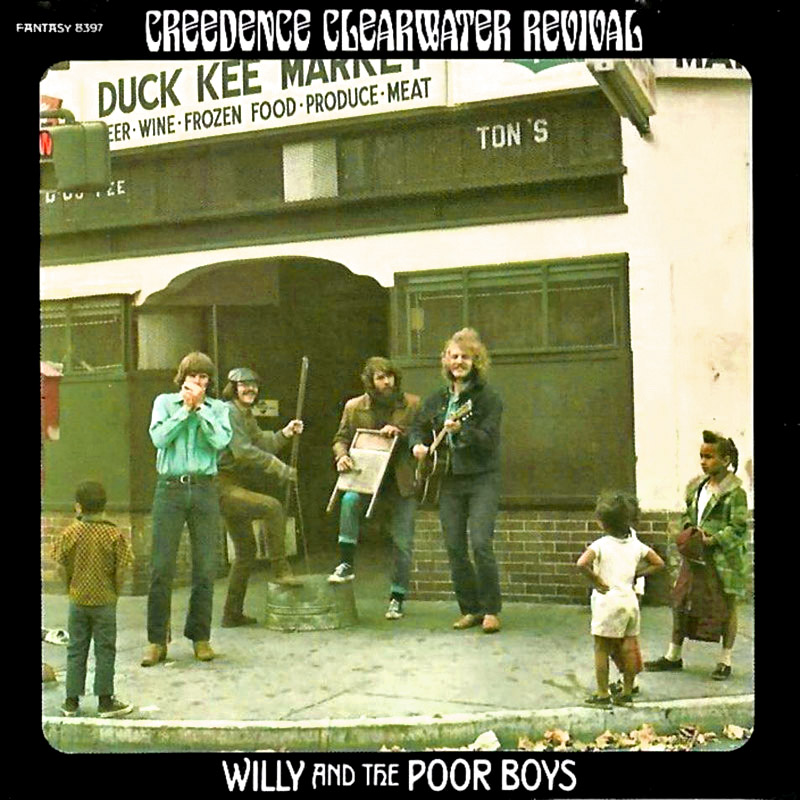
Like the Beatles had done with Sgt. Peppers Lonely Hearts Club Band, John Fogerty wanted this album to have a theme: so he developed the idea of a traveling band, calling the band "Willy and the Poor Boys, " a name he came up with from free-associating the book title "Winnie the Pooh." In the cover photo, taken in front of the Duck Kee Market in Oakland, California, just a few blocks up from what was then the Fantasy Records office, the band become "Willy and the Poor Boys": John Fogerty (Willy) on harmonica, older-brother Tom Fogerty on guitar, Stu Cook on gut bucket, and Doug Clifford on washboard.
The name "Creedence Clearwater Revival" was derived from: a) the first name of a friend of Tom Fogerty's named Credence Nuball (they added an "e" to it; b) the "clear water" mentioned in ads for Olympic Beer; along with the band's environmental interests; and c) "revival" as in an old time hallelujah-stye "revival show." (Bad Moon Rising pg. 40) Willy and the Poor Boys Cover photo: Basul Parik Side 1 Doug Clifford - drums Here's the album cover PopSpotted. Unfortunately, the background buildings have been stripped of all of their funky soul in the name of postmodernism. 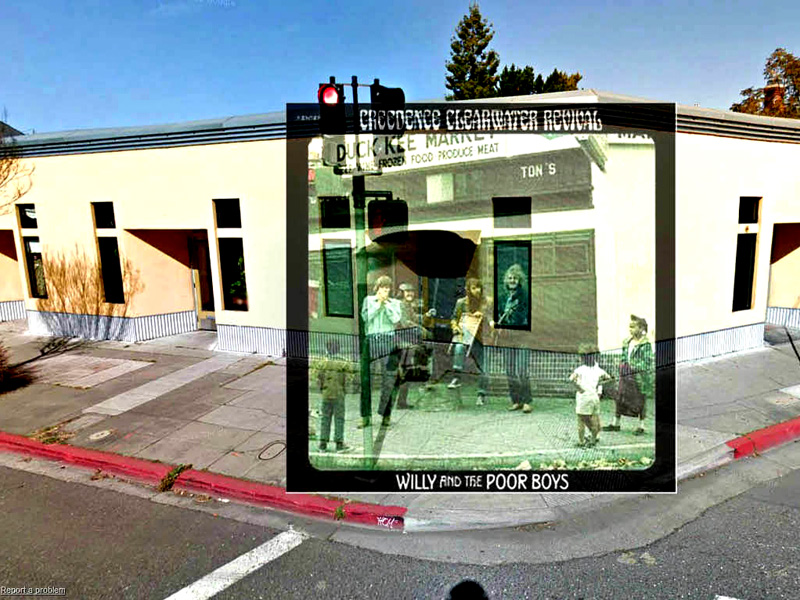
This is the intersection in Oakland of the photo shoot from above: Hollis St. and Peralta St. 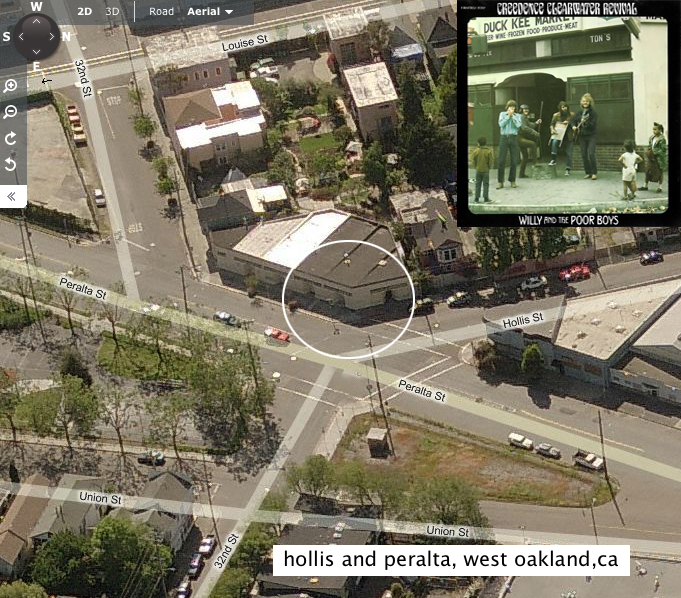
The band hails from El Cerrito, California, 20 miles from San Francisco. The album cover was shot in Oakland, two towns south of El Cerrito. (El Cerrito means "the hill" in Spanish.) 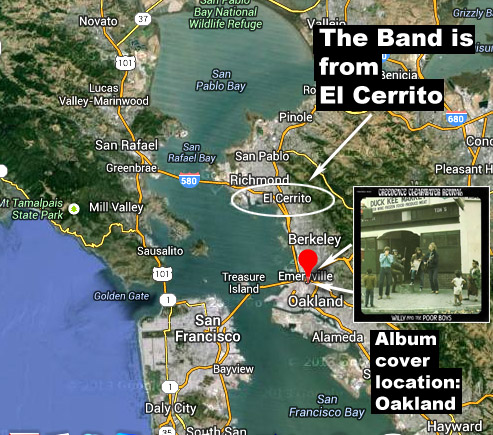
Here are Willy and the Poor Boys in a slightly different view. 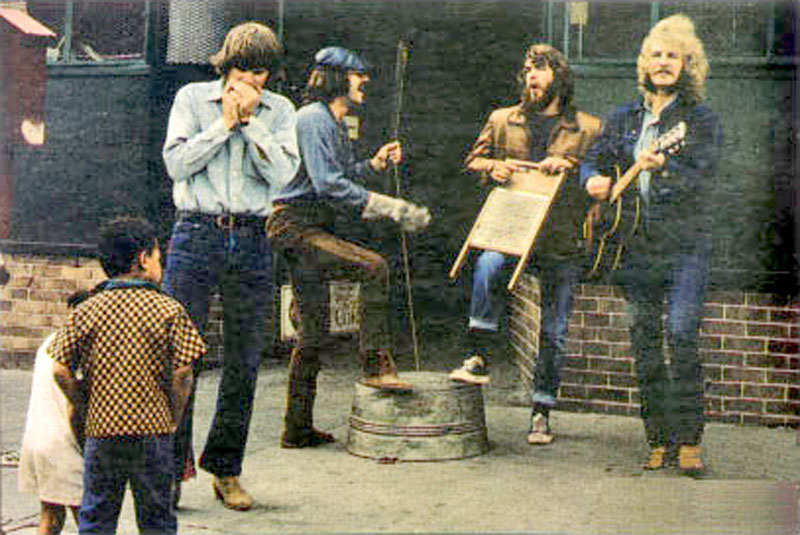
(photo: Basul Parik) ...and the Duck Kee market from an old photo. Although it was a few blocks up from the Fantasy Records office, the band didn't go there often. After the album came out, John Fogerty walked in to buy cigarettes (he doesn't smoke now) and the female cashier (perhaps Mrs. Duck Kee) pulled the album down off the wall and exclaimed, "You're the singer!." ( from Bad Moon Rising, p. 81) As I write this, I see a sign for "Clearwater" to the left of the Duck Kee Market. I'm not sure if that was really there or just photoshopped into the photo at some time. 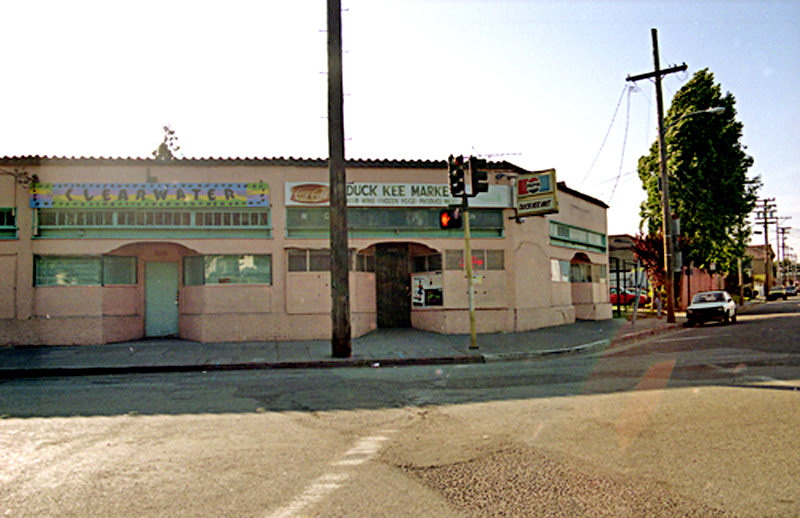
Here's the scene with the Poor Boys back on the corner. In the book Bad Moon Rising John says that the photographer (Basil Parik) ran out of film, so they ended up playing a long time at that corner until he got more film and came back. Another source says they came up with the instrumental song "Poorboy Shuffle" during that street session. 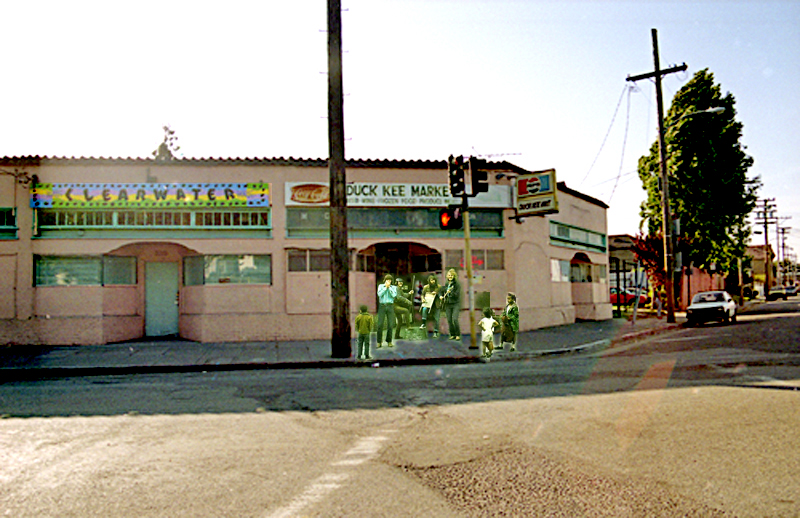
Here's the corner from another angle, back in the day. I found the photo by Uwe Kasten on Panoramio. 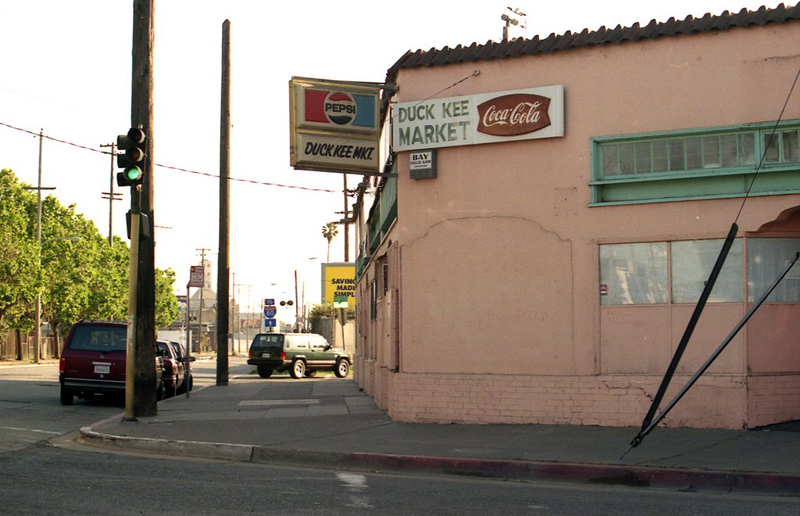
Here's yet another angle. Look behind the band, that's where they will soon be heading. The Fantasy office is 3 blocks down the street. 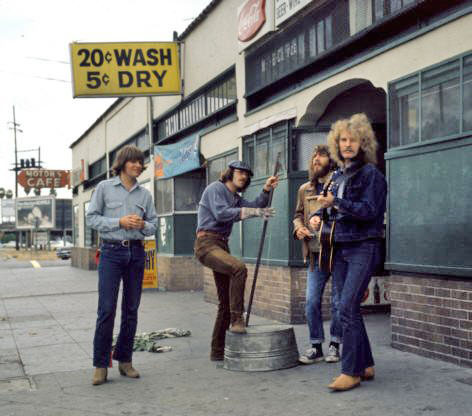
(photo: Basul Parik) Let's follow them down the street...(courtesy of out-takes found on the blog: "This is Book's Music.") Those are just neighborhood kids who happened to be around and were attracted by the music. 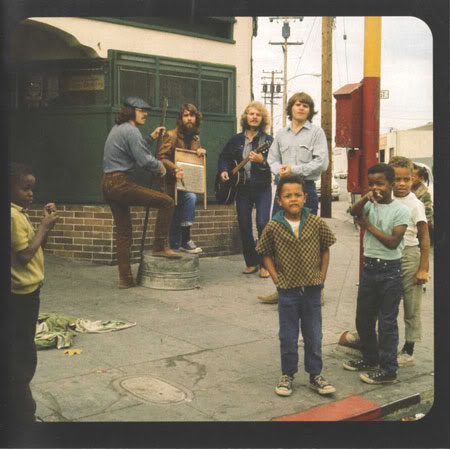
(photo: Basul Parik) Here they go... 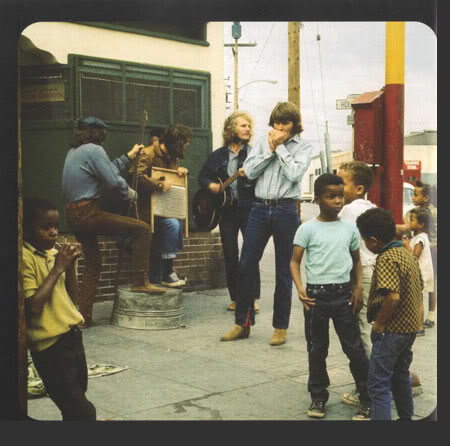
(photo: Basul Parik) They're crossing 32nd street in this shot.... 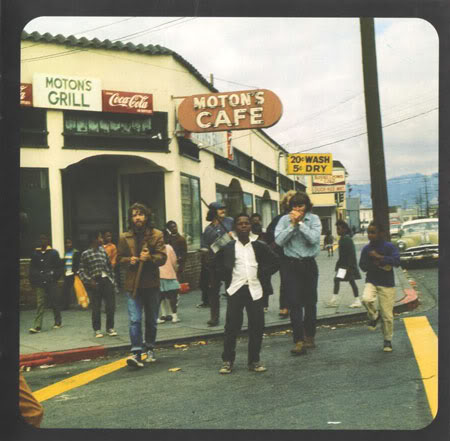
(photo: Basul Parik) being trailed by the locals... 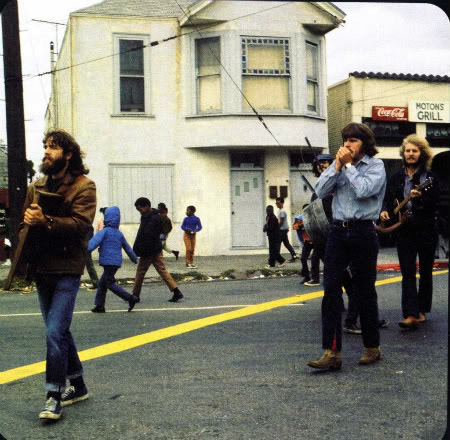
On the way back to Fantasy, the walk across this triangle... 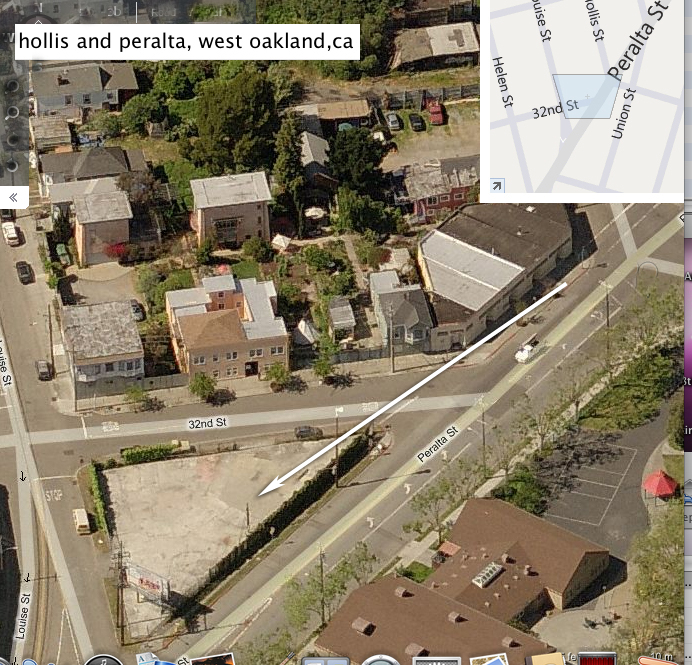
...where the album's back cover shot gets taken 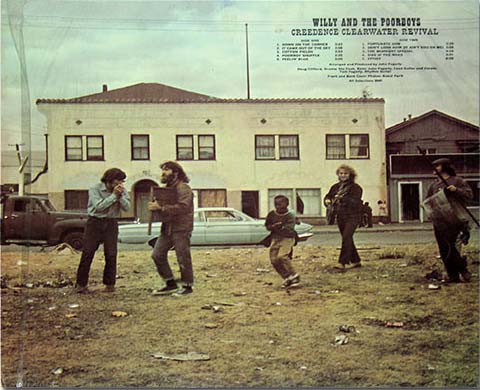
(photo: Basul Parik) Here's the triangle from Google Street Views. 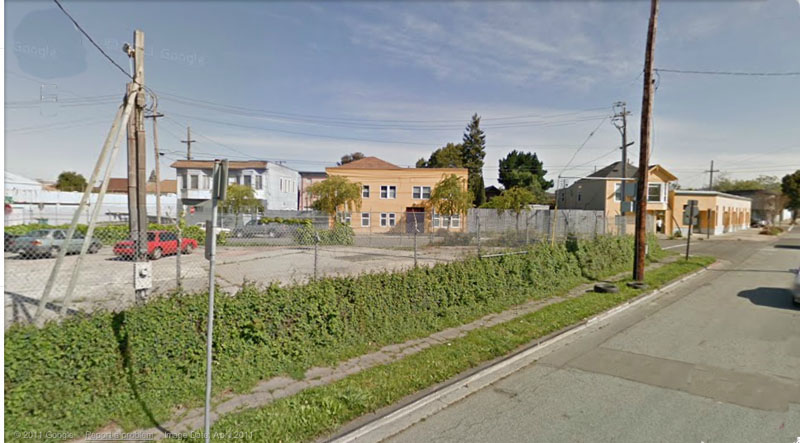
See how roof of the building in the back matches up 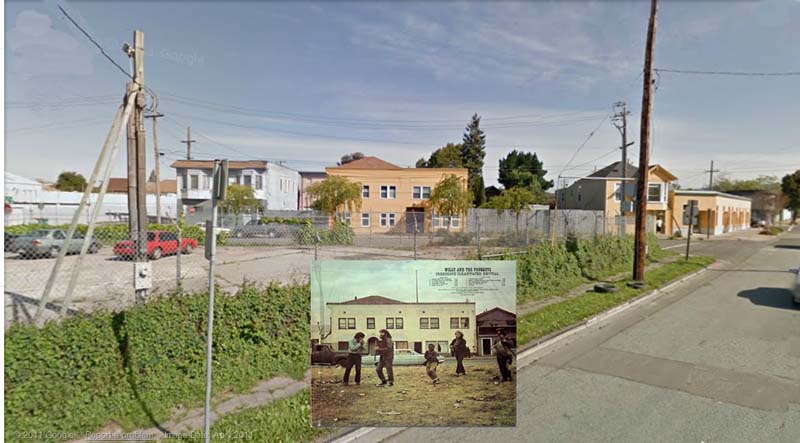
Now we will zoom in a little... 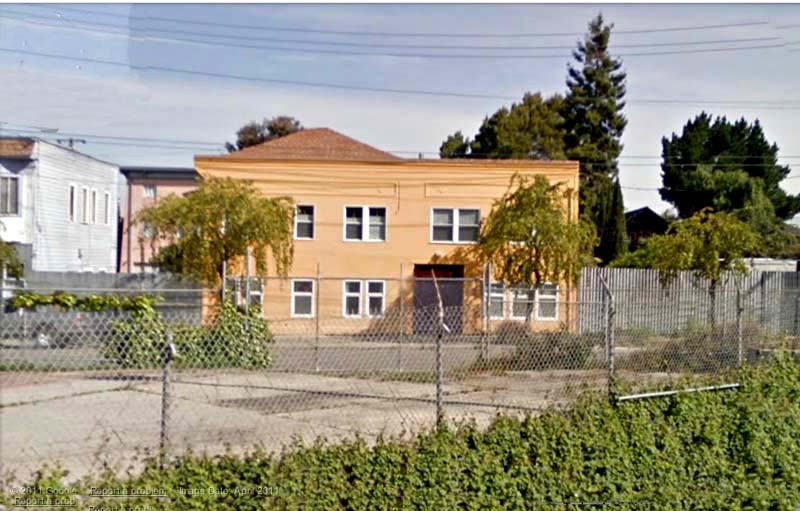
...so we can overlay the album cover back. 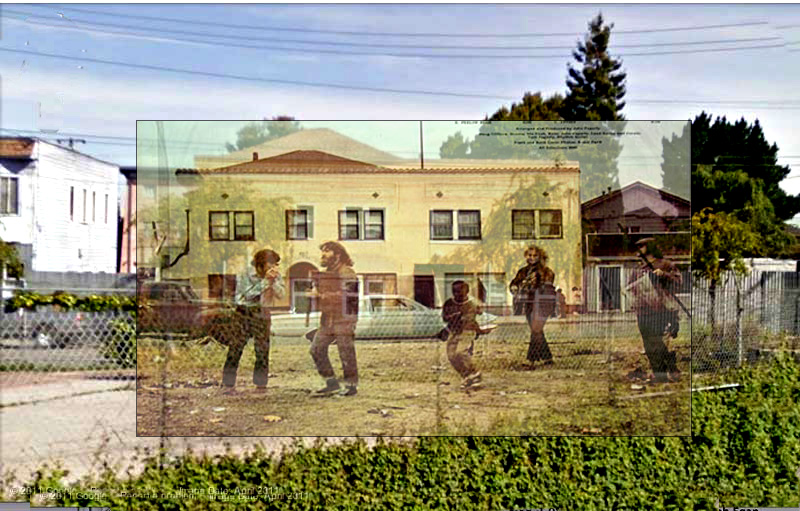
They were going back to the Fantasy Records offices just down the street at 1281 30th Street at the intersection of Peralta. (I got this address by calling the Oakland California Public Library and asking if Fantasy Records was in the 1970 phone book. The helpful librarian in the Local History section said it wasn't, but that Galaxy Records was at 1281 30th. That was a subsidiary label of Fantasy. So, bingo!) 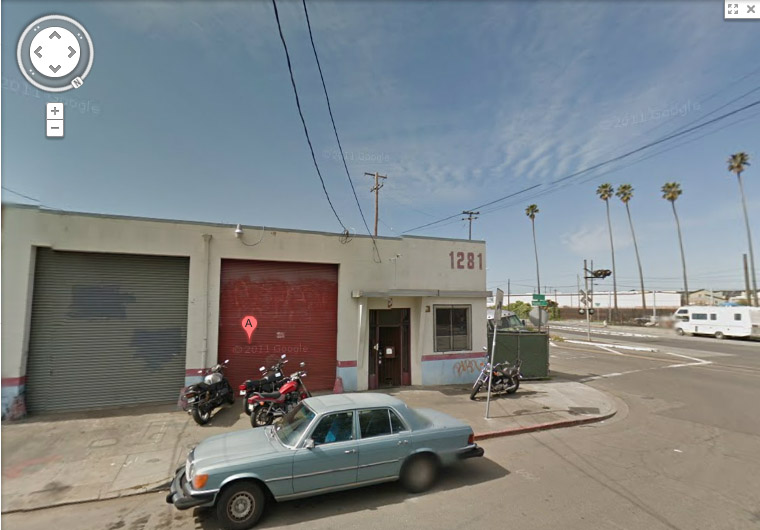
Here it is from the side. 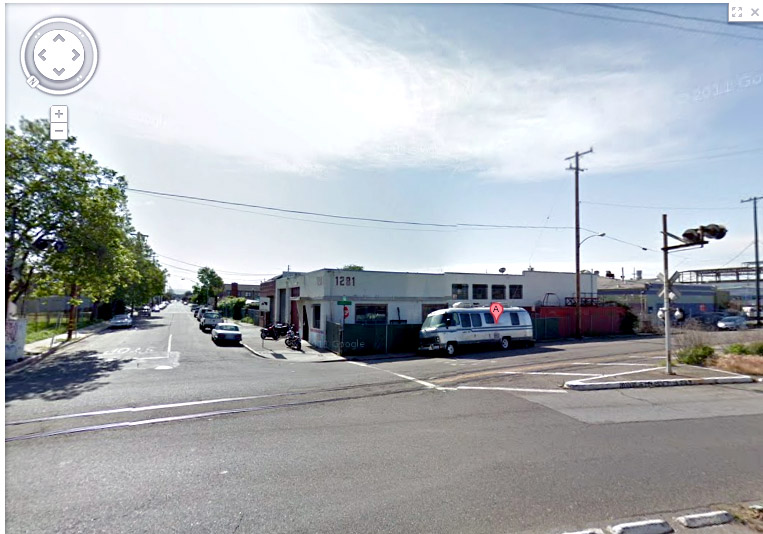
Here's the route they were going from the Duck Kee Market back to the Fantasy Records offices. 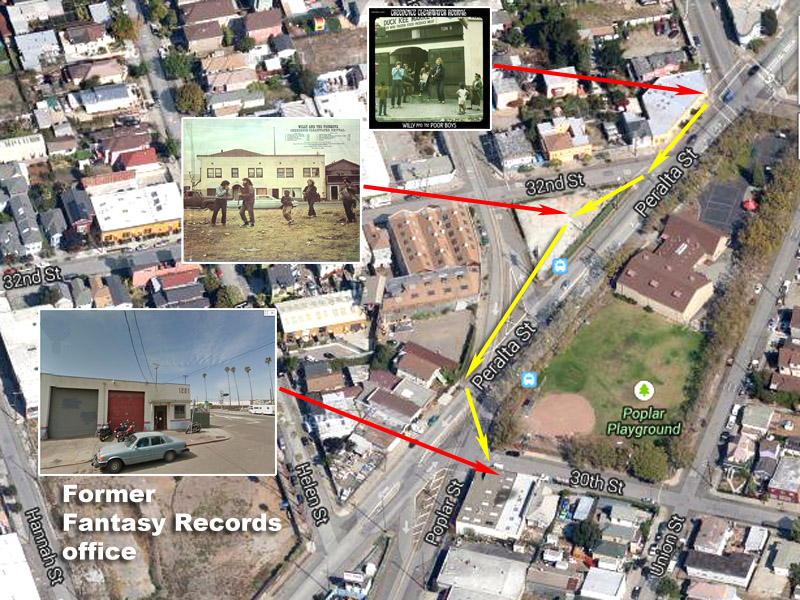
Here are two side views of the Fantasy offices. Here's the first... 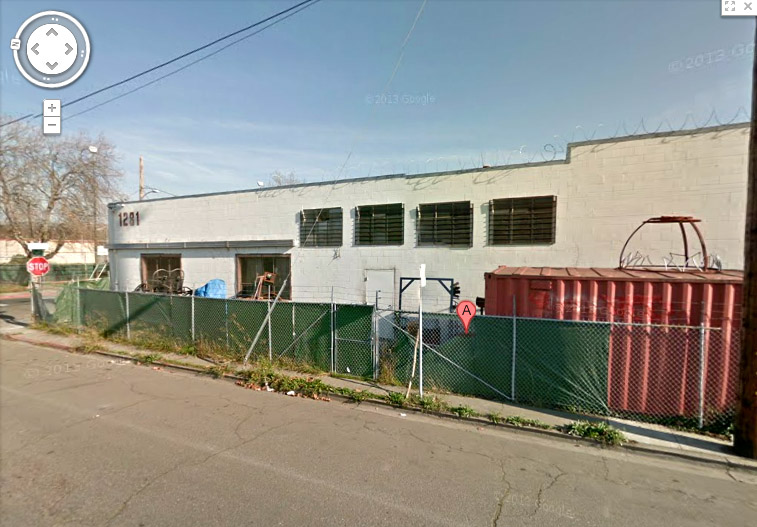
...and the second. 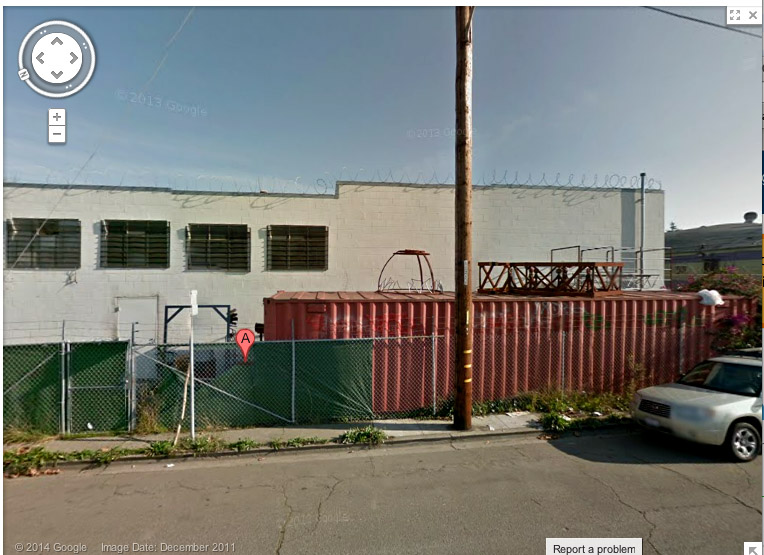
If you look at the building in Google Street View ...you see something you don't see much, if at all. One of the Google Street View photography cars photographing another Google Street View photography car - right next to the old "factory". 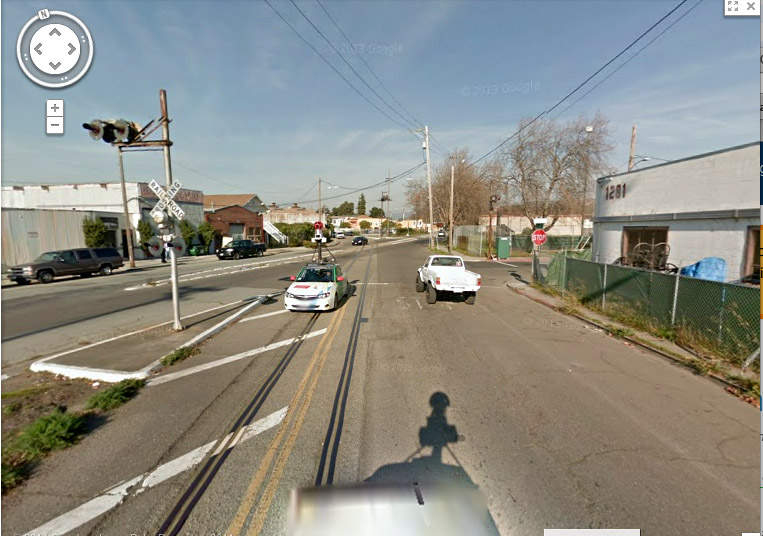
Here's the Google Street View camera car in close up. It take about 12 photos at the same time, then patches them together later. I'm a huge fan of Google Street View so "keep up the good work!" (I waved once when they passed me at 39th Street and Ninth Ave in Manhattan, but, having checked, I was not immortalized in a Street View shot.) 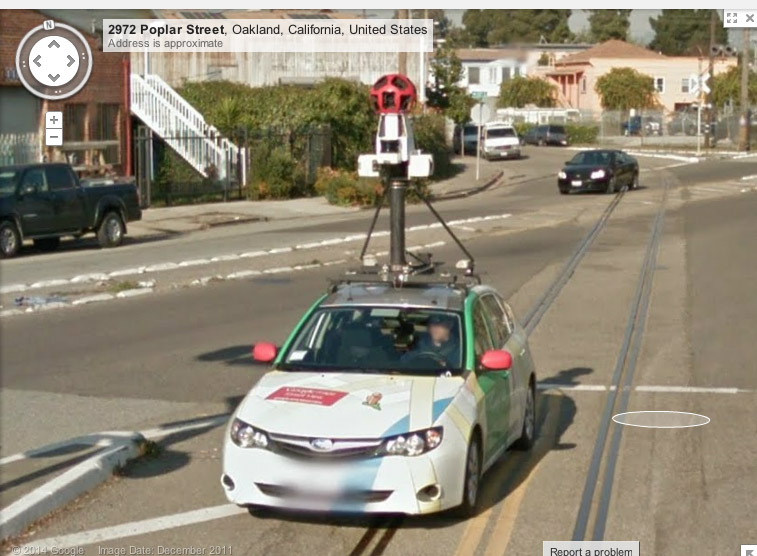
One of the songs featured on this album is "Cottonfields" by the legendary blues singer Lead Belly. The famous refrain goes: "It was down in Louisiana, about a mile from Texarcana, in them old cotton fields back home." (John Fogarty sings it like "a-home.") I always wondered what what those cottonfields would look like, so I looked them up. He's a map showing where "Down in Louisiana, about a mile from Texarcana" would be." (Texarcana is actually 25 miles north of the Louisiana border, but since it's the closest big city the border, I'm figuring the lyrics are short for the "Texarcana regional area.") 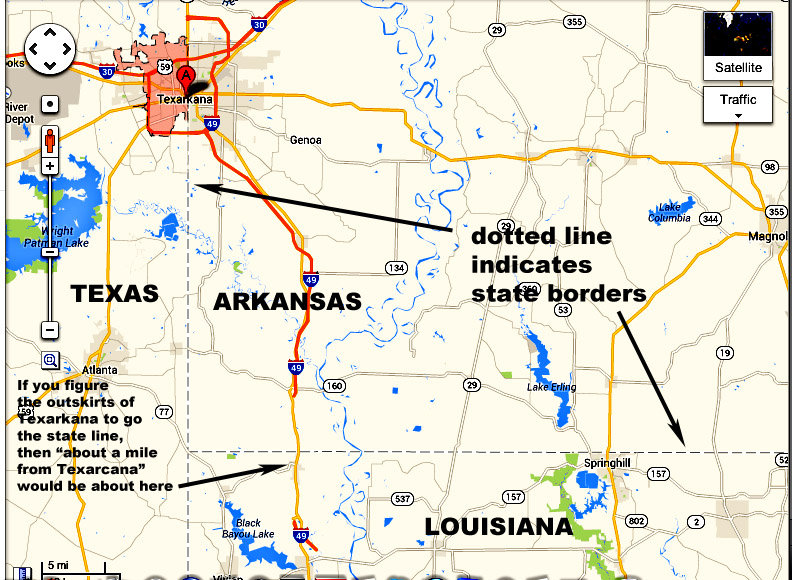
And here's a photo of a Louisiana cottonfield. 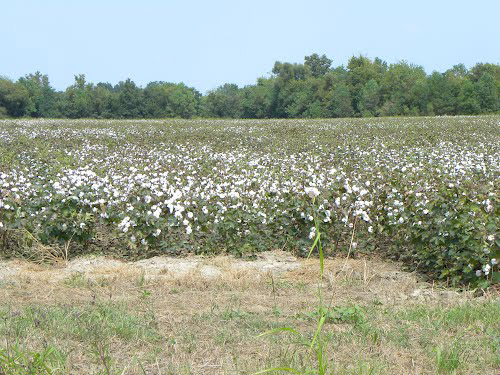
Let's move now to the album cover of Cosmo's Factory, a CCR album that came out in 1970 with hits like "Travelin' Band" and "Who'll Stop the Rain" on it. This had always looked to me like it was set up in a photographer's studio, but, lo and behold, this is exactly where they practiced. The proof come through a short promo film made by a French TV Show the year the album came out, and which it now on YouTube. (Search for "Creedence Clearwater Revival "Rehearsal at Cosmo's Factory". It's directed by Claude Villers & Bernard Bouthier.) 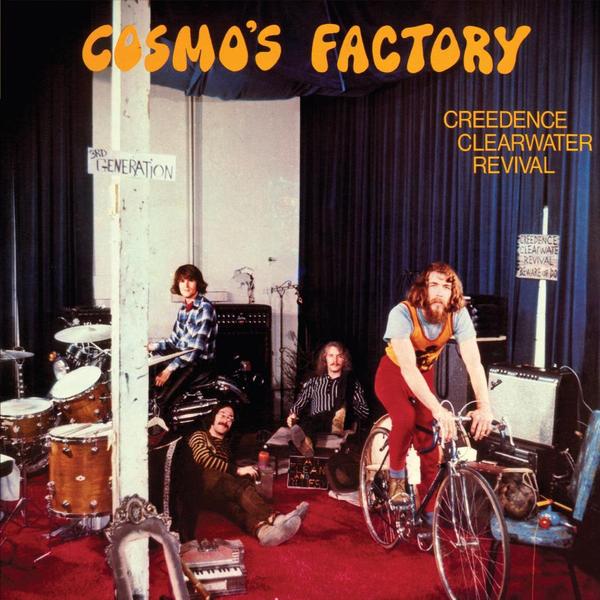
Cosmo's Factory Side 1 Here's the outside of the site of the industrial building in Berkeley where the band practiced to make the Cosmo's Factory (1237 Fifth Street). They had always called the places where they practiced "factories" and this one they named in honor of Doug, whose nickname was "Cosmo." Trivia fact: It was located next door to where the clothing line called "The North Face" had its headquarters. The former site was destroyed by fire on June 29, 2005. It was then housing props and stage sets for the Berkley Repertory Theater. (p 309/Bad Moon Rising/Bordowitz) 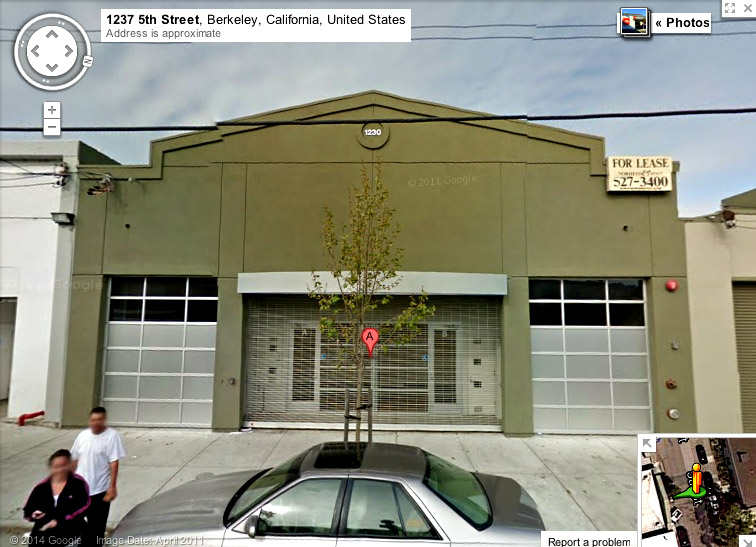
The French film crew "tracked" through the space on their way to film to practice area. The place was big enough for the band members to drive into and park their cars. 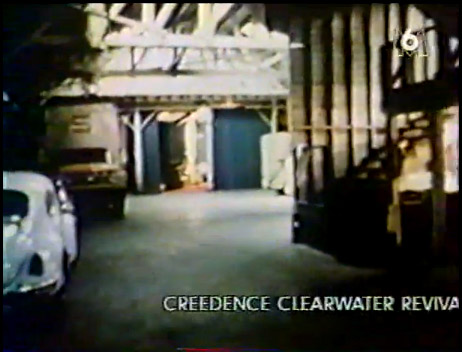
I wonder who drive the white VW bug? 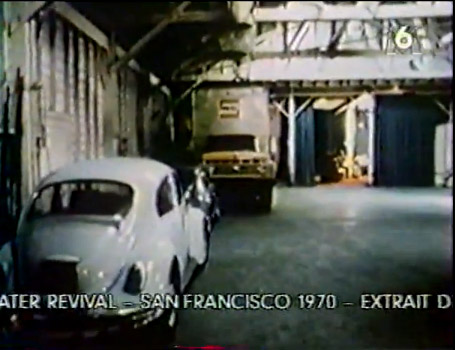
...the peaked ceiling... 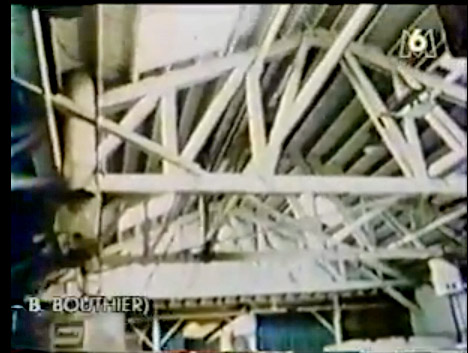
...a small mezzanine... 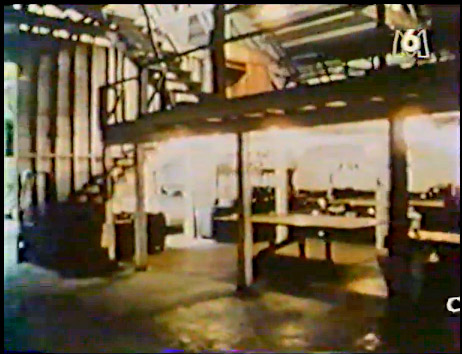
...and finally we arrive at the practice area with the familiar blue curtain. 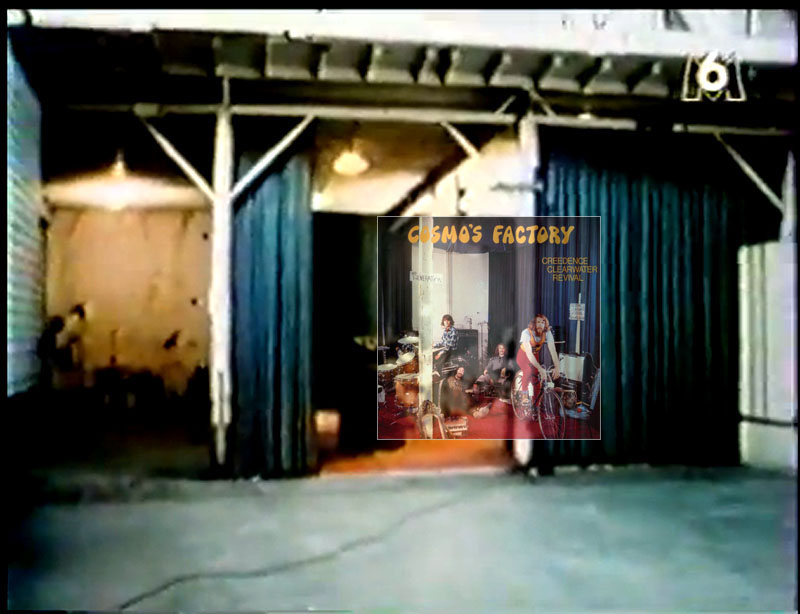
Here's the PopSpot. I grew up with the album. I was blown away when I discovered that the album cover was "real life" and not a photo studio. 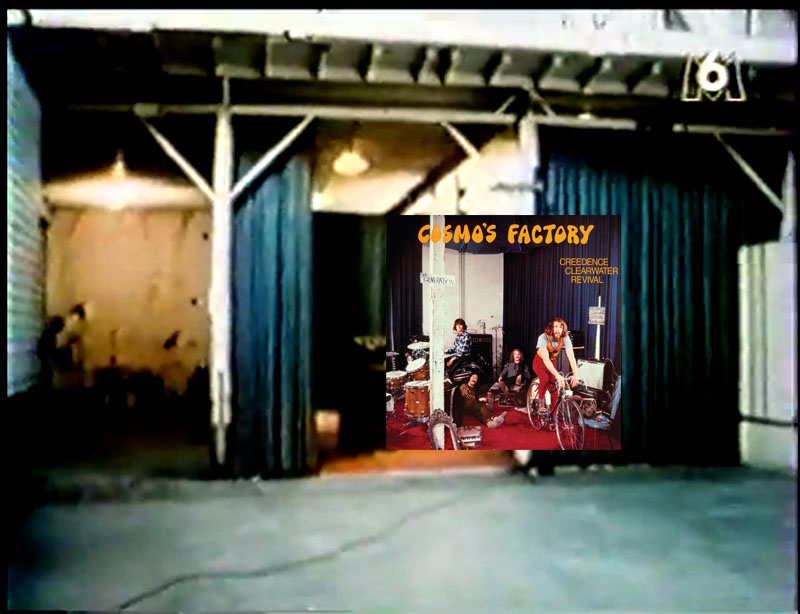
Here's where Cosmo's Factory was on a map of the San Francisco area. 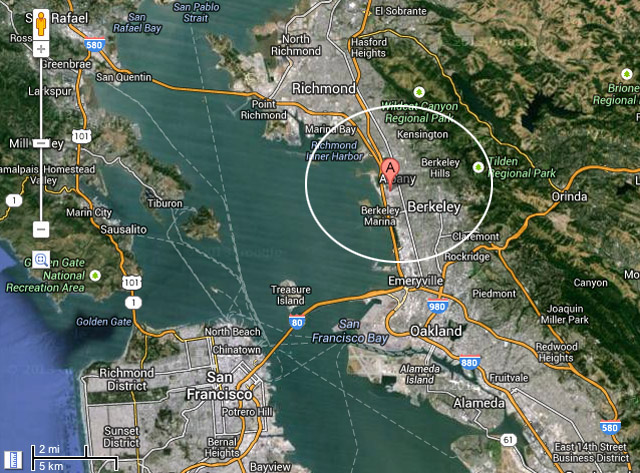
And a closer look. 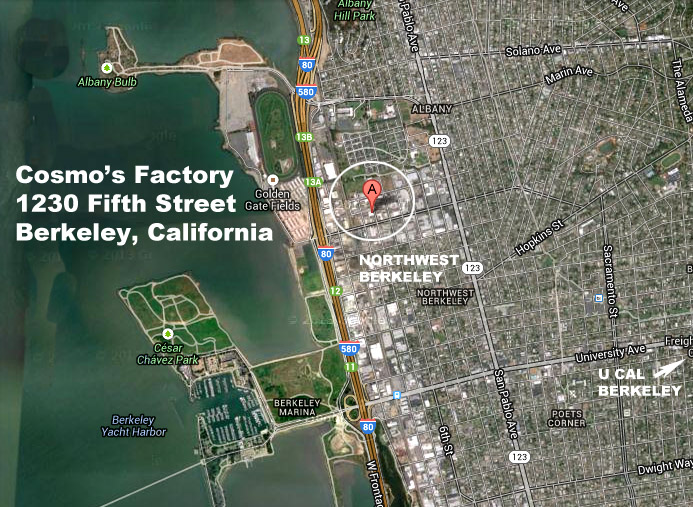
Now we'll zoom in on the building. 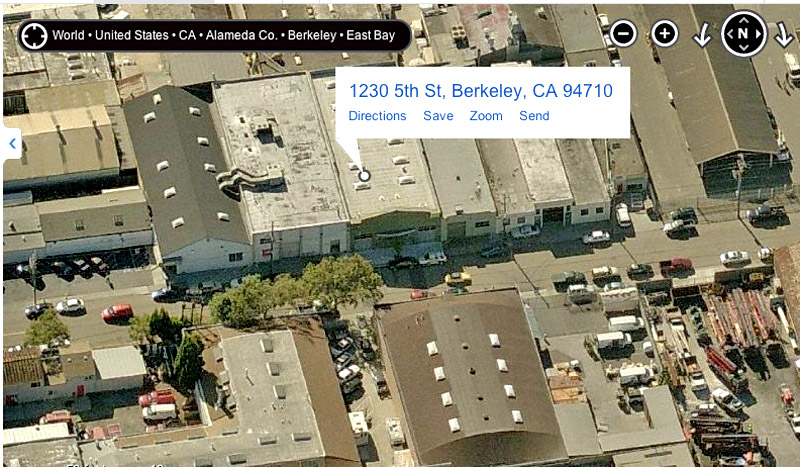
And here's a street view in one direction... 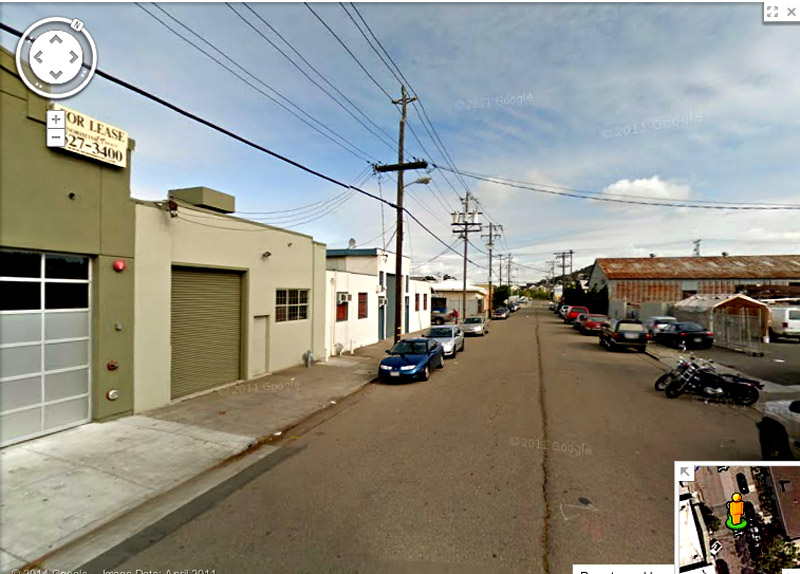
...and the other direction. 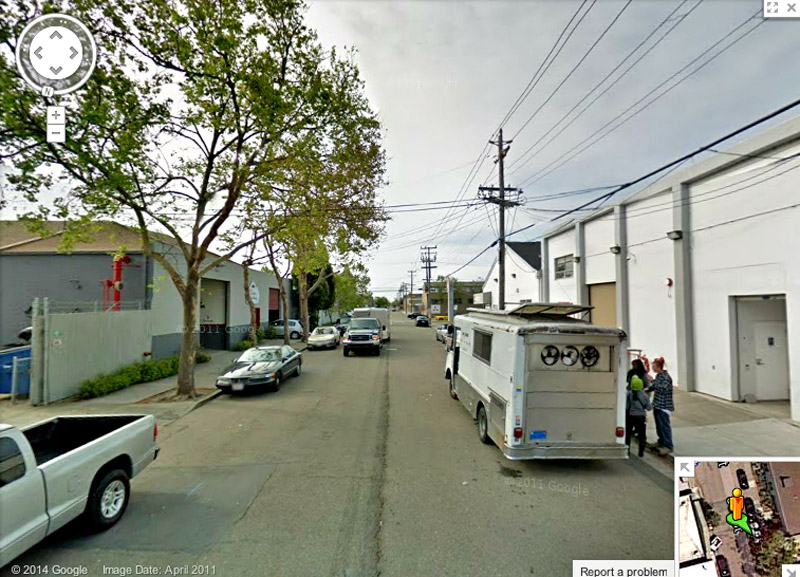
Although I have not ""PopSpotted" them, I'm going to post the covers of their other CCR albums below. I also put in some interesting sidelights about some of the songs. If anyone has any further info on where the covers or back covers were taken, please send them in. Creedence Clearwater Revival (the first album) 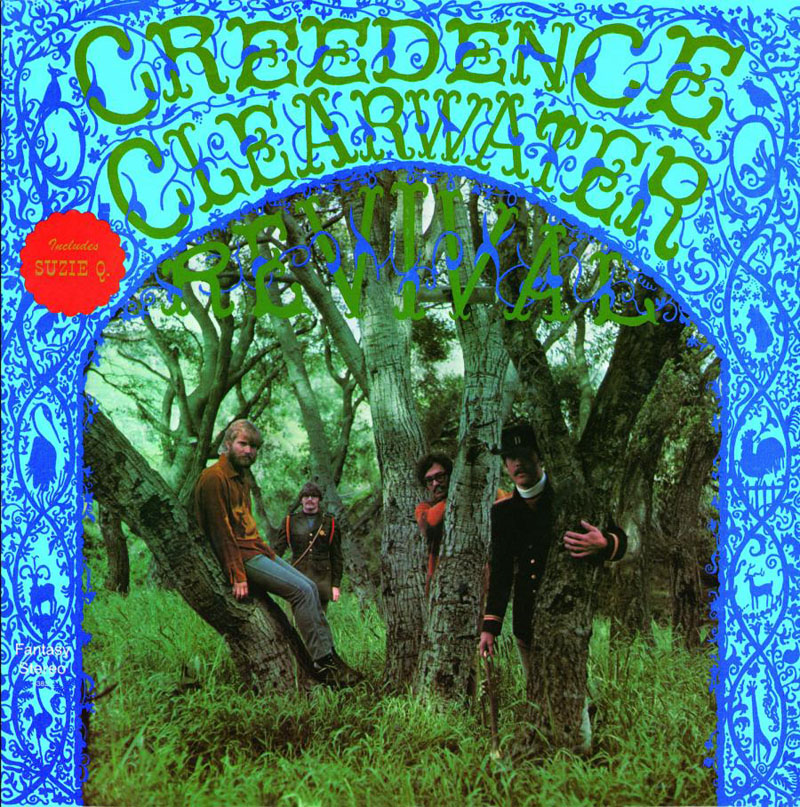
Side 1 Doug Clifford - drums Bayou Country 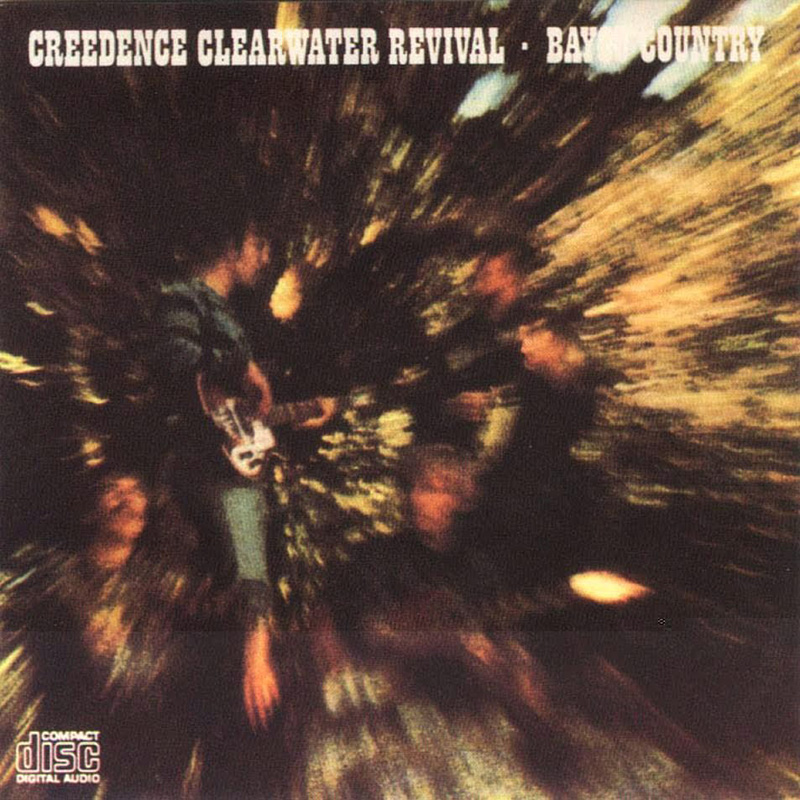
Side 1 Green River Green River - Front 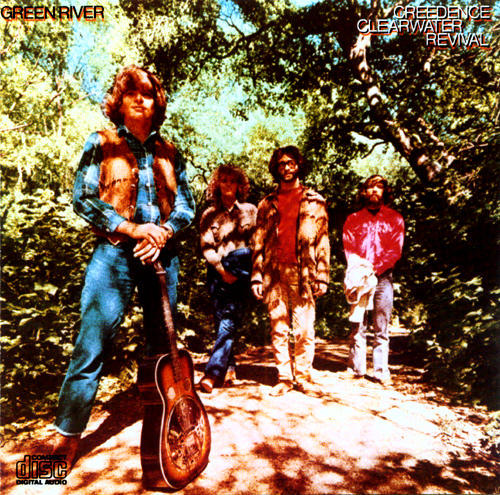
Green River - back. 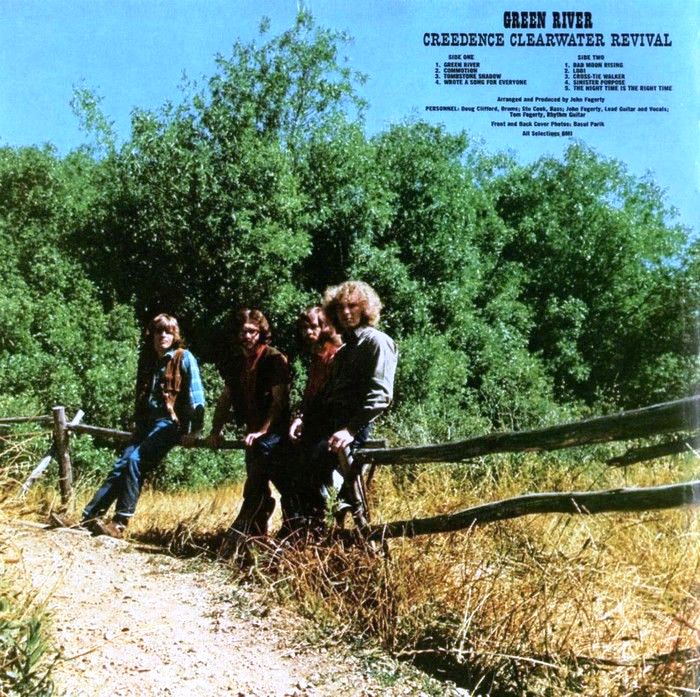
Side 1 Here's some interesting background about the song "Green River" from the book Bad Moon Rising by Hank Bordowitz. In summers, John, his brother, and their family used to drive an hour north to the town of Winters, California and rent small cabin along the Patah Creek that runs through the town just below a dam that forms Lake Berryessa. The small group of cabins was called "Cody's Camp" and was run supposedly by a distant relative of Wild Bill Cody. The camp is no longer in business. So the song "Green River," which features the line: "Up at Cody's camp I spent my days" and features "cool water," "catfish," "shoe flies," and "walkin' along the river road at night" is really about John's experiences at Putah Creek." When John and Tom grew up in El Cerrito, a "Green River" was the name of a local syrup that you could pour into water and make a fizzy drink. It made for a better song title that "Putah Creek." Here's where "Cody's Camp" was in relation to Sacremento: 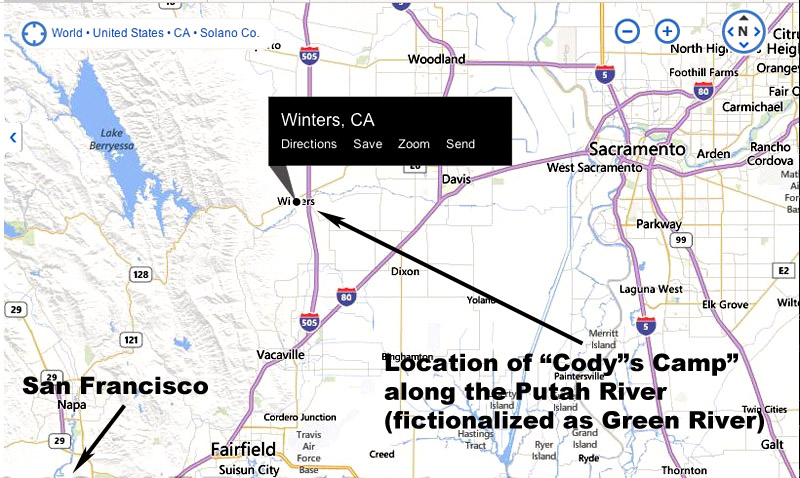
Here's a closer view. Cody's Camp, the setting for "Green River," would have been in the oval area. 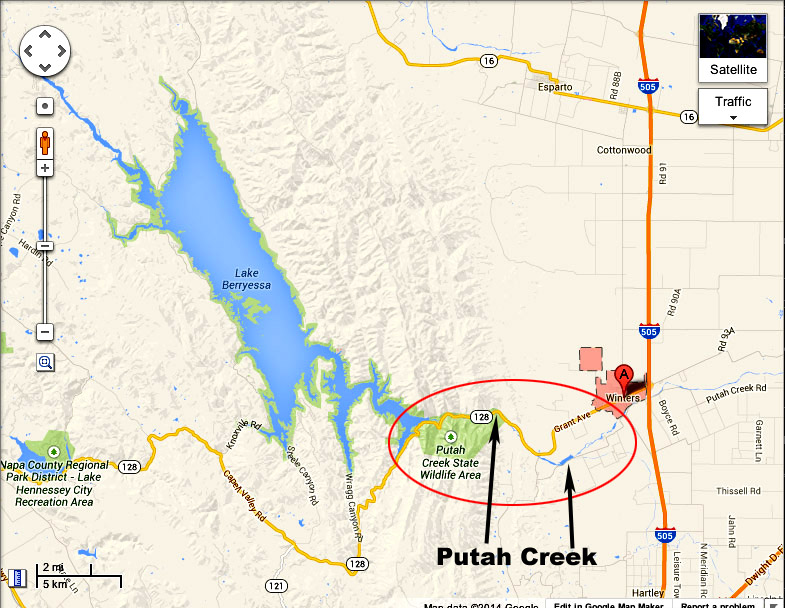
This is a shot of Putah Creek from the road. Cody's Camp would have been near here. The scenery looks a lot like the album cover. They may have shot the front and back album covers around here. 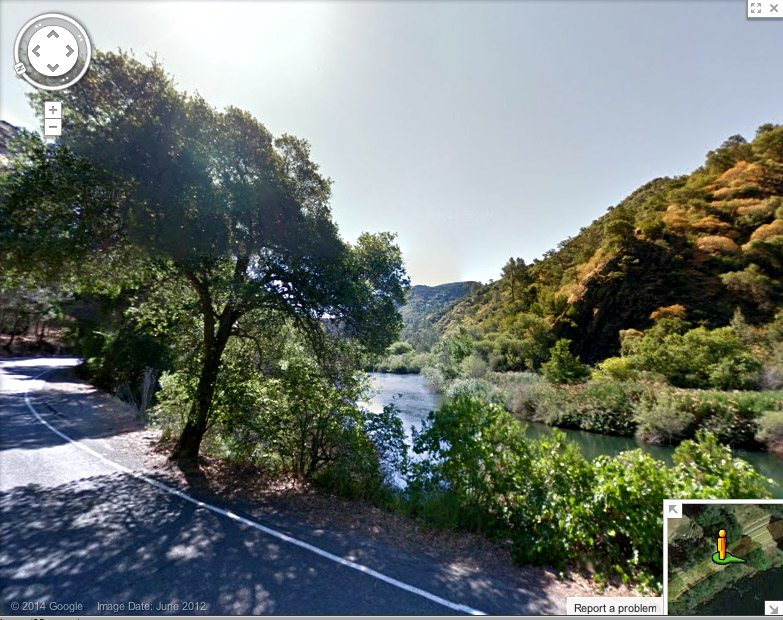
UPDATE (Dec., 2014) PopSpots reader and CCR fan Ari Paulow of Finland writes in that Stu Cook recently said in an interview that the front and back cover photos for Green River were taken at the Tilden Regional Park off of Grizzly Peak Boulevard, in Orinda, California, which runs along the area near Berkeley and Oakland.(see below) Thanks, Ari!. 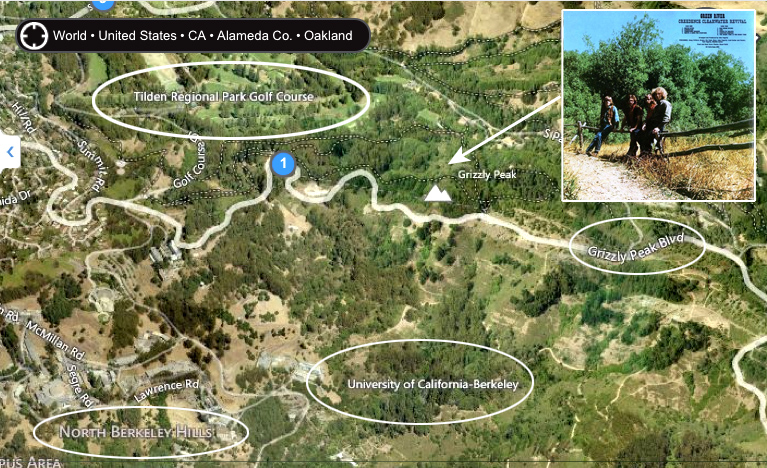
Another well-known song from the Green River album is "Lodi" which contains the memorable line, "Oh! Lord, Stuck in Lodi again" (probably not the Lodi Chamber of Commerce motto). It's about a musician who was passing through this town in the Central Valley of California, but bad fortune ("ran out of time and money") keeps him from being able to leave. For fun I thought I'd look it up. So I looked for where the Greyhound Bus drops him off at the beginning of the song ("Rode in on a Greyhound..."). It's near this welcome sign (from an old postcard) near the railroad tracks where he'd like to ("catch the next train back to where I live.") 
Here's the scene from a different perspective. The welcome sign is still up. 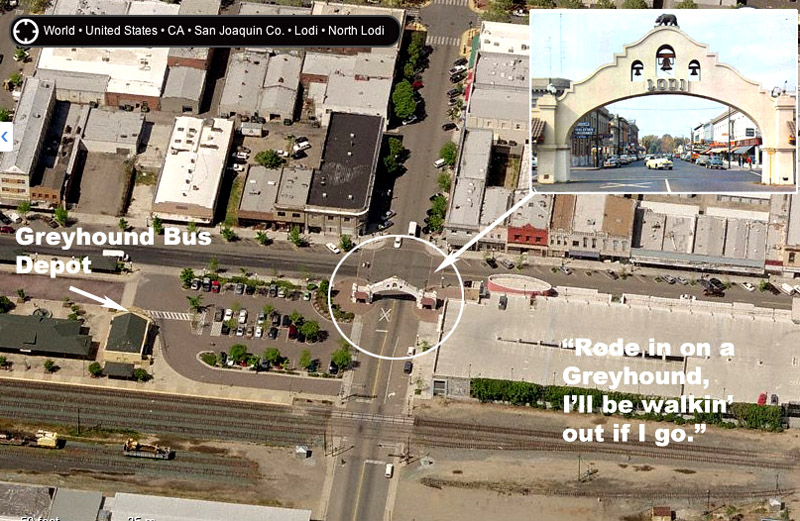
It's got a pretty main street. The welcome sign is way in the distance. According to the book Bad Moon Rising John Fogerty had a book he kept of potential song titles and he thought "Lodi" was "cool." The band had even played there in the early days when they toured California. Ironically, during the energy crisis of 1973, John almost literally got "stuck" in Lodi, when, driving through the town, he needed gas and had to wait in a mile-and-a-half line that led to the station." 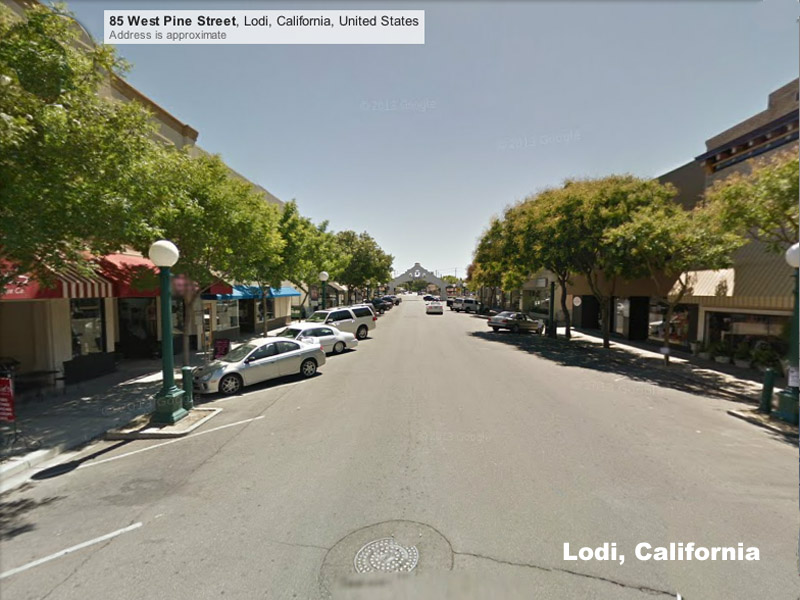
Pendulum 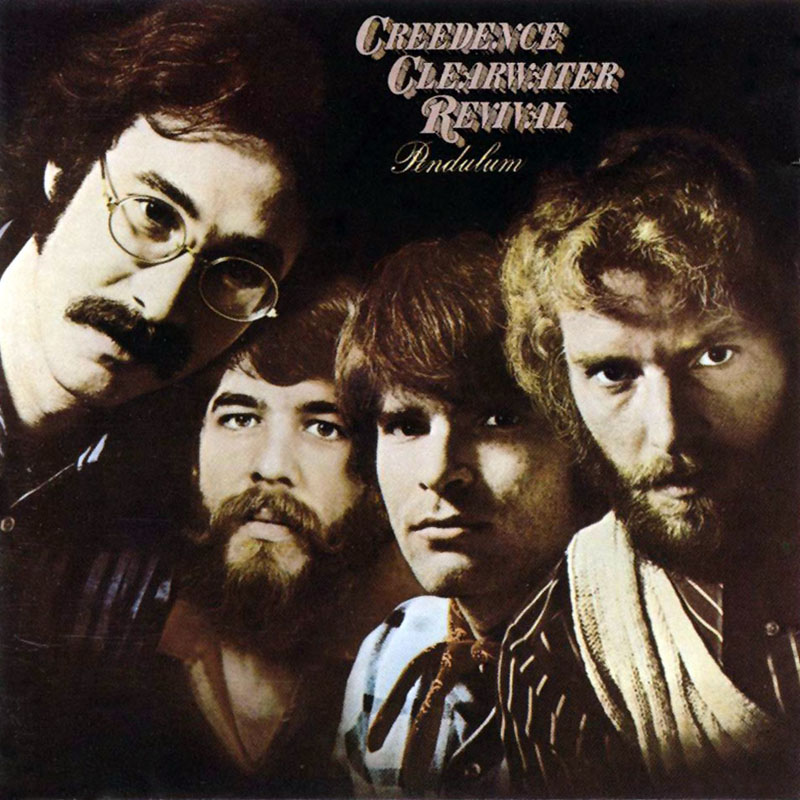
Pendulum - back cover. 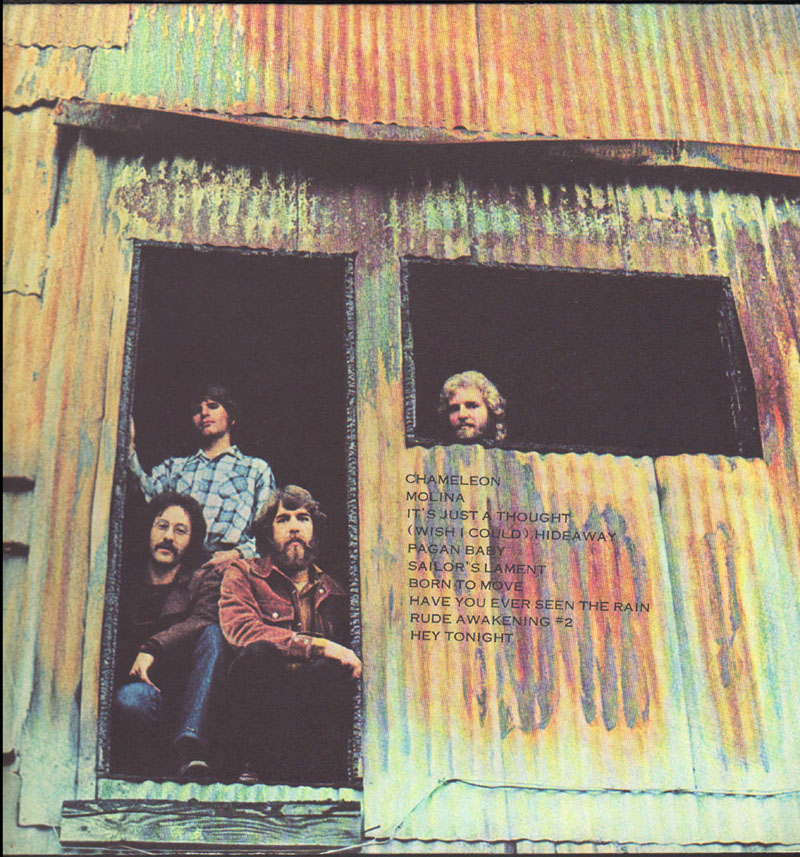
Pendulum - interior. 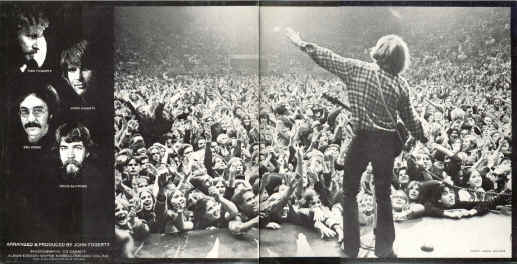
photo by Baron Wolman Pendulum Mardis Gras Jake Rohrer, longtime associate of the band, is quoted in Hank Rordowitz's book Bad Moon Rising, as saying that the young girl on the cover holding a tambourine, was his mother's "great aunt or "grandmother." His sister, Mary Walsh, who also worked for the group, colorized the girl from an old family picture she developed in her darkroom. 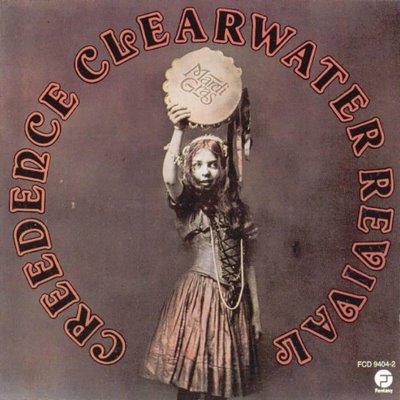
Side 1 Well that's it for now, folks! Until next PopSpot, Keep on Chooglin'. Be sure to look at the ADDENDUM below the "The End" sign for new Creedence information as it comes in. 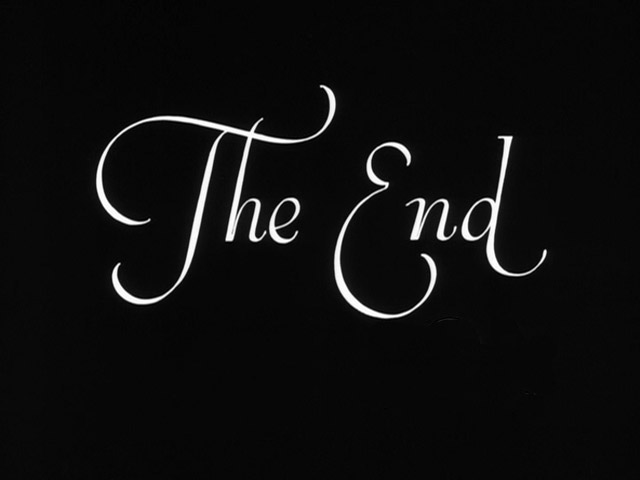
ADDENDUM #1 A walkthrough of John Fogerty's childhood houses based on his autobiography, by Cerrito resident Ken Salonen. Thanks, Ken. |
||
